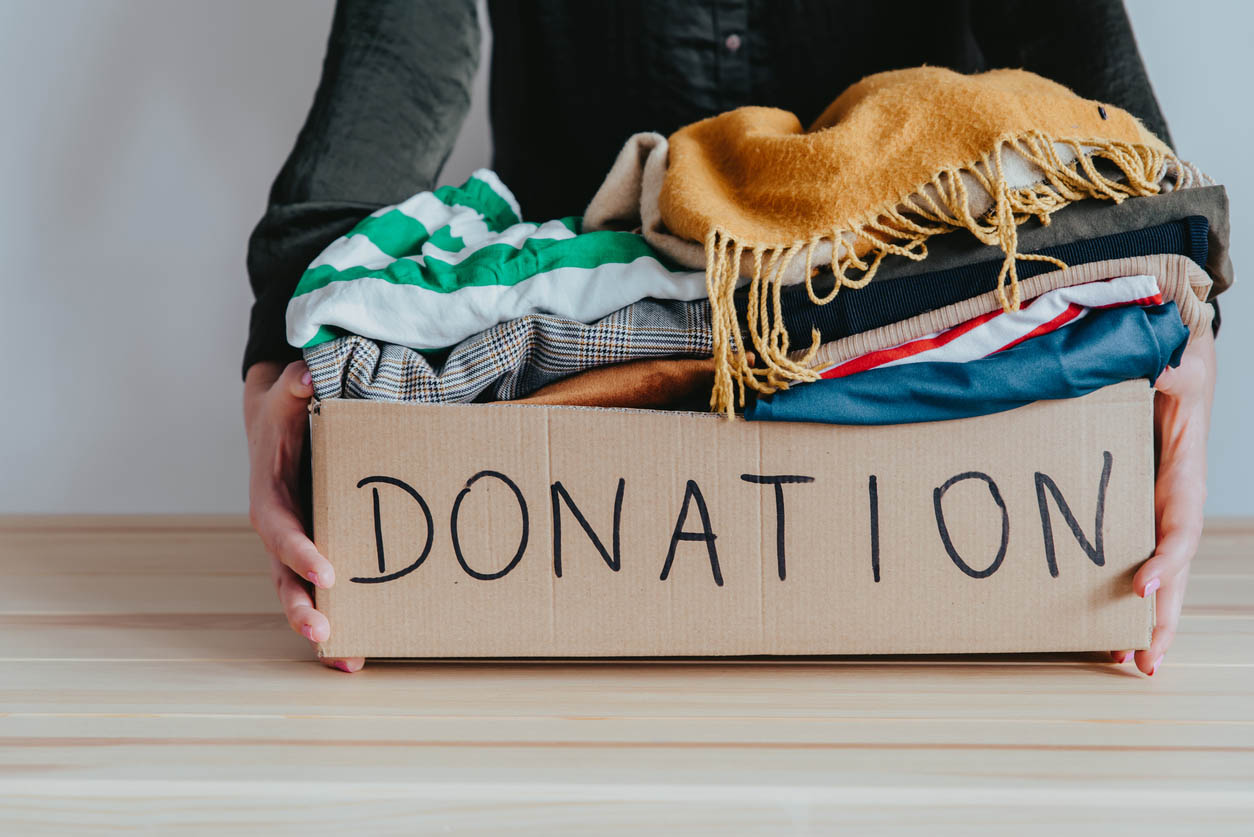We may earn revenue from the products available on this page and participate in affiliate programs. Learn More ›
Whether you’re moving out of a small apartment or a multistory house, moving out of one space and into another requires a lot of planning and organization to be done efficiently. But this guide on how to pack for a move will give you moving hacks that can make the process less stressful along the way. Whether you’re looking for specific tips on how to pack or you need some ideas for eliminating clutter or reducing the risk of injury, the following tips for moving will have you feeling like an expert in no time.
If you still find yourself overwhelmed along the way or underprepared for the packing and moving process, know that you can always turn to professional movers for help. These experts often offer packing services as well, so you don’t have to do the heavy lifting yourself.
Time required: 3 days to 1 week
Difficulty: Beginner
Estimated cost: $100 to $300
Tools & Materials
Bobvila.com may earn a commission from purchases made through these links.
Before You Begin…

Before you consider these moving tips, it’s wise to make a timeline of your move to know precisely when you need to be out of your space and when you will officially be in your new home. Seeing this timeline will allow you to choose the proper moving dates. These dates will also be helpful when hiring a professional moving company, so they can be aware of the dates they’ll be loading your boxes, transporting your belongings, and arriving at your desired destination. Once hired, these experts will be able to pack and load your items quickly and efficiently, so you don’t have to run the risk of tweaking your back or hurting yourself by hauling heavy boxes or furniture.
Tips for How to Pack for a Move
- Take stock of what you’ll be moving to determine the packing materials you’ll need.
- Obtain packing and moving materials, and gather them in one place.
- Pack items by room and label boxes accordingly.
- Consider assembling an “open first” box with essentials for eating, sleeping, and showering in a new space.
Safety Considerations
- If you’re moving house to house, you may need a dolly to transport heavier boxes or small pieces of furniture.
- Consider buying or borrowing a pair of forklift moving straps to move heavy items that could result in injury if you were to move them without assistance.
STEP 1: Gather your moving supplies.
Before you start stuffing boxes with your personal belongings, gather all the materials and supplies you’ll need to complete a successful move. This ensures you’re not making additional trips to the home improvement store along the way, which can delay the packing process and make moving more costly. Another way to save money while moving is to ask neighbors and friends if they have any moving boxes you can use. They might have boxes around from their own recent moves or large package deliveries. You can also post on social media channels like Facebook and Nextdoor to search for free boxes or low-priced moving supplies. If you work in an office, check your mailroom to see if you can take any leftover boxes from large shipments. While searching for boxes may take some time, it saves money and is more sustainable than purchasing brand-new boxes or containers.
You’ll also need packing tape to seal the boxes, markers to label each box or container, and packing materials such as newspapers, grocery bags, or towels to protect breakable items. Consider wardrobe boxes for clothes on hangers or specialty dishware or glassware boxes for delicate articles.
Put all your materials in one place so you know how much of everything you have in case you need backups. You may also need to borrow or purchase a dolly, hand truck, or moving straps to lift and move heavier boxes or pieces of furniture.

STEP 2: Make an inventory of the items you plan to pack.
Go room by room and make a list of the items you plan to pack. Taking inventory by room can help keep things more organized and make unpacking quick and seamless. It may even be helpful to assign each room a specific color and use tape or markers in coordinating colors to label boxes and large items to help identify where they go once you’ve moved into your new apartment or home. Keep in mind items like mattresses, blinds, curtains, and other less obvious things that will need to be labeled and packed away if you’re moving them.
While making the list, you can also identify which items in the room can be donated or thrown away if they’re not used or have lost value over time. Once identified, these items can be placed in piles or baskets to be donated, sold, or tossed out at a later date. Decluttering is something you’ll want to do before you start packing—there’s no sense in moving items to your new home if you’re just going to get rid of them as soon as you unpack.
It’s also helpful to have a family member or friend go through your inventory list after you’ve made it to make sure nothing was forgotten or unnecessarily put on the list.
STEP 3: Pack personal items for each family member in suitcases.
Moving can separate you from your belongings for anywhere from a day to several weeks. No matter the length of the move, make sure to pack a suitcase for each family member that contains everything they need to get through however long they’ll be in transit. The suitcase should include a toothbrush, toothpaste, skin care, a hairbrush, and any other toiletries individual family members need. Make sure one person packs shampoo, conditioner, and body wash for the family. These will come in handy if you’re staying in a hotel for a night or if you want to take a shower on the first night in the new house and don’t want to dig through boxes just for some soap.
Be sure to also include in these suitcases the personal items that mean the most to each family member. These can consist of a beloved blanket, childhood stuffed animals, or an heirloom necklace. This ensures each family member looks after the most sentimental and important items to prevent them from being lost or destroyed in case a moving truck gets left behind or items get buried under other boxes in a storage facility. Other items to pack in these suitcases can also include social security cards, birth certificates, medical records, and additional important information that you want to keep secure.
If you’re driving, keep these suitcases with you in your vehicle. If you’re flying, make sure these suitcases are small enough to be carry-ons, and ensure all your liquids comply with TSA regulations.
Depending on their age, each family member should be in charge of their suitcase from packing to the day of the actual move to ensure things run smoothly.

STEP 4: Start packing items room by room, and clearly label everything.
This is one of the packing tips for moving that will save you tons of time once you’re unpacking. Begin packing each room, putting only the items located in that room in the coordinating boxes. Then you can label each box accordingly and try to keep them located close together so unpacking them is as straightforward as possible. For example, all small appliances, silverware, cookware, bakeware, glassware, and other items should be kept in boxes labeled as “kitchen.” Even if there’s room left over in a box, packing the hand mixer in a box with the video game console will only give you a headache once you’re in your new home. The one exception to this rule is that you can use pillows, blankets, or towels to help buffer delicate items like TVs or picture frames.
Keeping all items from bedrooms together can also help young children or kids feel secure throughout the process since they’ll be able to locate their boxes and know the contents inside are safe. Moving tips and tricks like this one also help professional movers know where to place specific boxes when unloading, so the bathroom boxes don’t end up in the basement and vice versa.
STEP 5: Take apart any large items.
Oversize items such as dressers and cabinets can become less cumbersome when they’re broken down into smaller pieces. Take a primary bedroom dresser, for example. An eight-drawer dresser is much harder to move as one item with drawers rattling and sliding around than if the drawers were removed and packed individually.
Other large items, such as bed frames, bookshelves, and hutches, can be broken down to pack more easily and compactly. Plus, protecting each individual shelf, drawer, or storage piece can help keep them from getting unwanted scratches or marks that often occur during moves. Items like bed frames will likely need to be taken apart anyway since they are too big to fit into an average moving van or truck bed. While you’re disassembling furniture, it’s also essential to keep any nuts, bolts, or screws in the same labeled bag, so when it’s time to put the piece back together, you won’t have any missing parts. Consider taping these bags to the corresponding pieces of furniture.

STEP 6: Donate or throw out any items that you don’t want to move with you.
As you pack and move items from closets and other spaces, it’s wise to make piles for items you want to donate or throw away. Your donation pile can include anything from clothes you no longer wear to housewares that you’ll no longer use after the move. Before you haul bags of items to donate, you may want to check to see if local nonprofits provide a pickup service. In some areas, you can schedule a date and time for a truck to come to collect the items you wish to donate, which takes the hassle out of packing your car and driving the items to one or more collection centers. Plus, if you keep any donation receipts, you may be eligible to receive a tax break down the line. If you have the time and extra help, it can also be wise to hold a garage sale or individually sell any items you’re not taking with you on Facebook Marketplace or Craigslist.
STEP 7: Pack an “open first” box with essentials you’ll need right away.
Packing an “open first” box can be one of the most effective ways to reduce stress once you’ve moved out of one space and into another. You can use a clear container to identify the contents more easily, but a regular moving box with an “open first” label works well, too. In this box, you’ll need everyday essentials such as toilet paper, paper towels, dish soap, and utensils to make settling in a breeze. It’s also wise to pack things like a power strip, phone chargers, a flashlight, and basic tools like a screwdriver or an Allen wrench to put furniture back together. Whether this is a backpack, a clear tote, or a labeled box, be sure to put it in the car you’re traveling in or somewhere else that’s easy to locate once you’ve arrived at your destination.
Regardless of what stage of life you’re in, you’ll likely encounter a move at some point. Whether moving out of a college dorm or a family home, packing everything you own and moving it into a different location can cause stress and anxiety. The good news is that some of the best moving companies such as United Van Lines also offer packing services, which can alleviate some of the stress of how to move and leave more of the logistics and planning to you. This way, you can focus on coordinating the move instead of doing all the packing yourself, which can be time-consuming. Professional movers have the expertise and skill set to not only pack in an organized and efficient way, but also to load a moving truck in a way that provides the most space for all your items. If you’re overwhelmed by the magnitude of items you have or the manual labor required to move, hiring packing and moving services may be your best bet.


